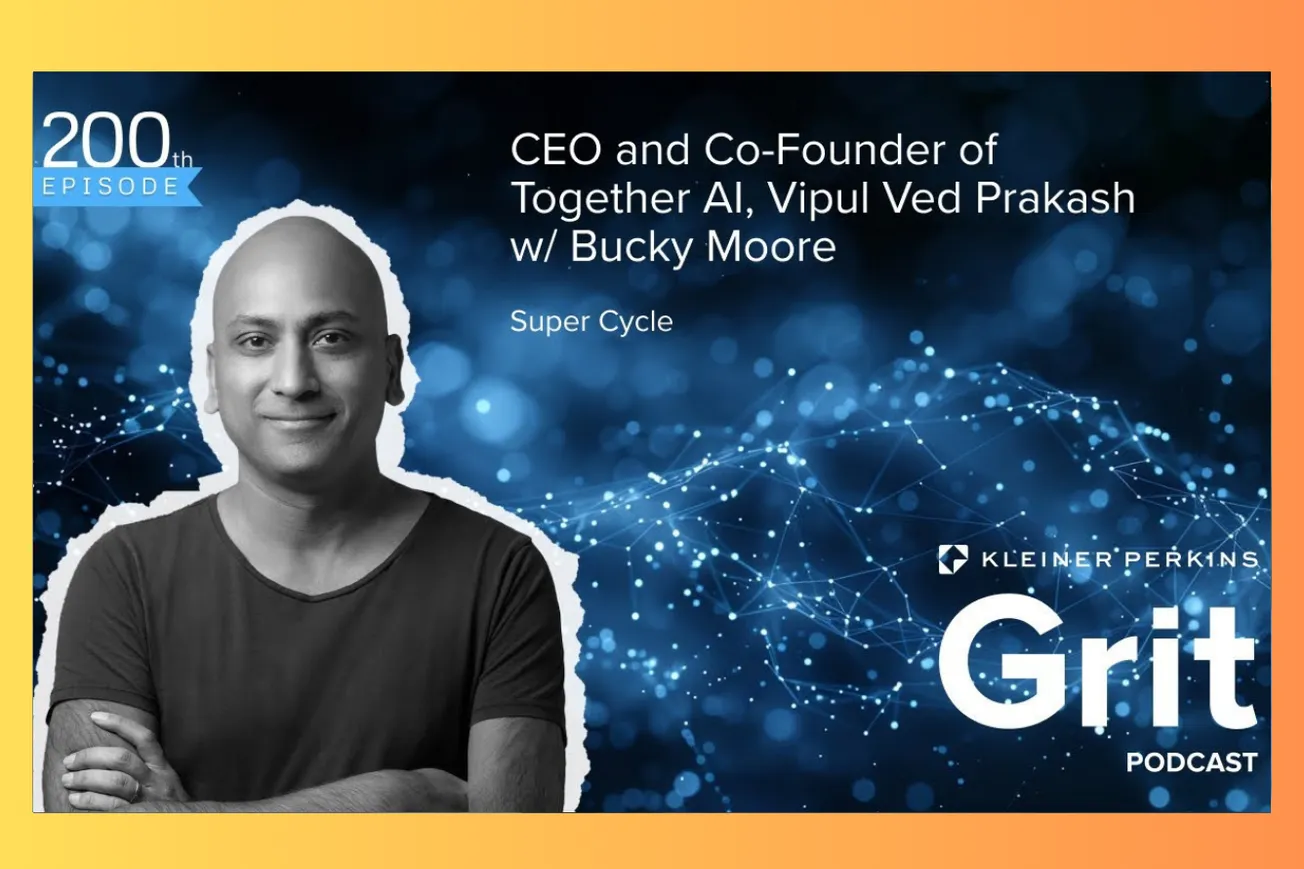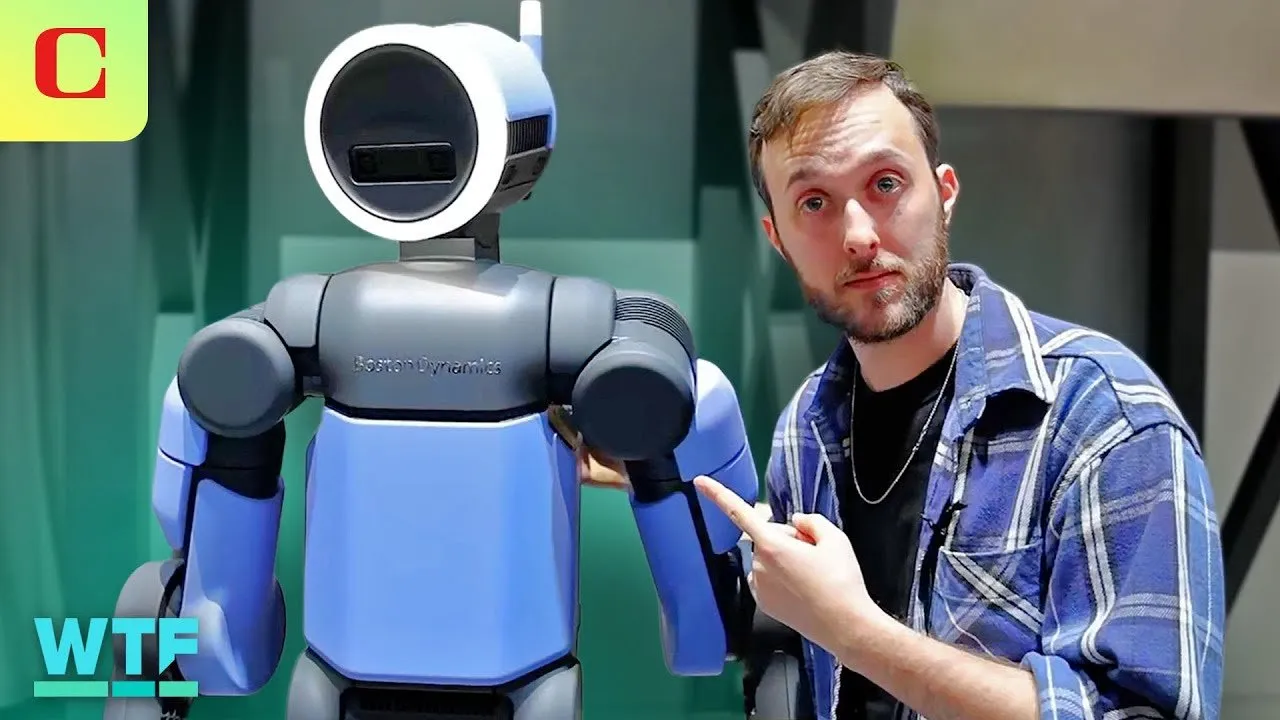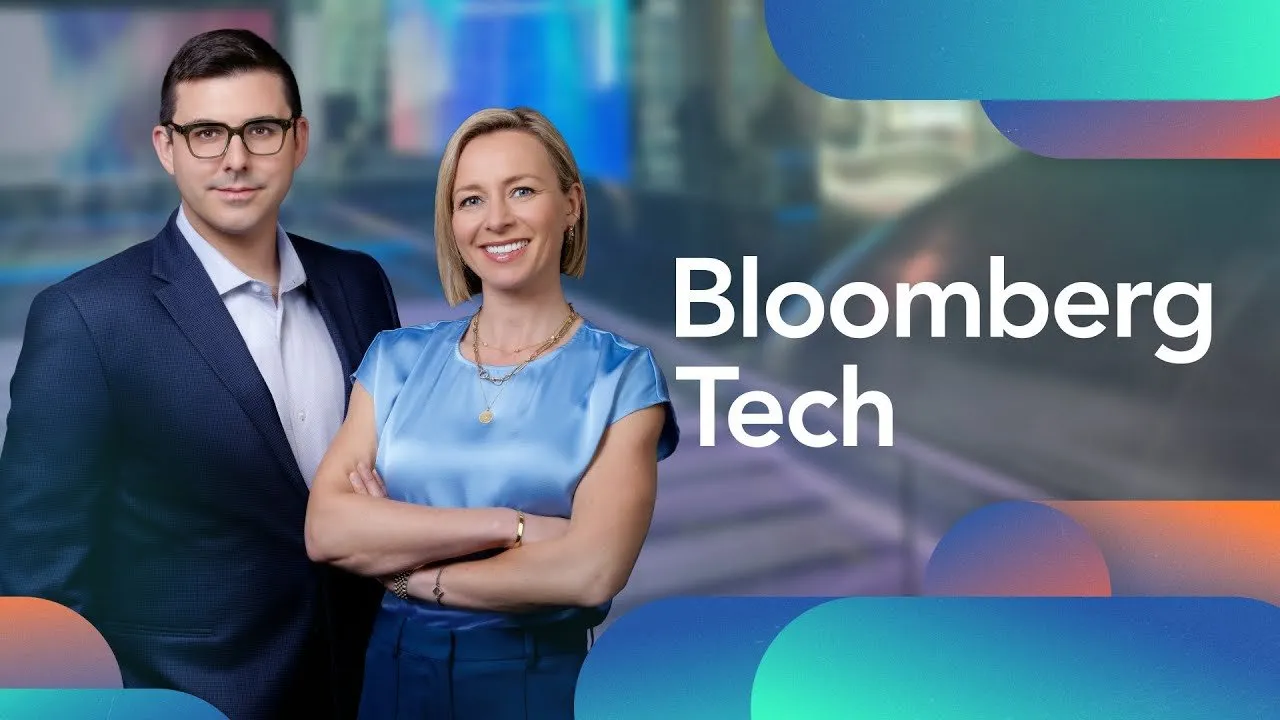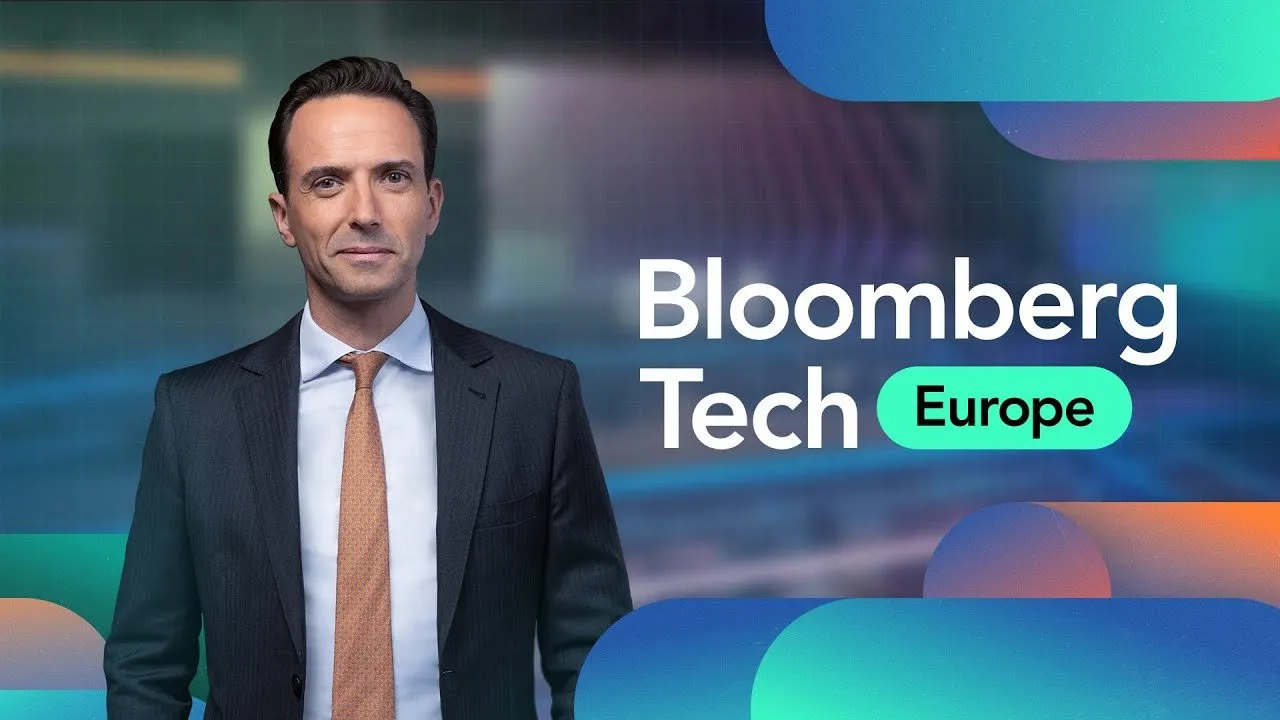Table of Contents
Together AI CEO Vipul Ved Prakash reveals why open source models will dominate enterprise adoption, how crypto miners became the backbone of AI infrastructure, and why we're only doing 0.1% of the AI we'll be doing in 10 years.
Vipul Ved Prakash's journey from Napster DRM engineer to Apple tentpole feature leader to Together AI founder illustrates how infrastructure revolutions emerge from understanding where concentrated power creates opportunity for decentralization.
Key Takeaways
- Open source AI models are rapidly approaching proprietary model quality, with the performance gap expected to close completely with Meta's Llama 4.5 release
- Enterprise adoption will favor open source models because companies want to own their model bits and maintain control over proprietary data rather than sharing it with closed-source providers
- The vast majority of enterprise data remains locked within organizations, creating massive opportunities for custom model fine-tuning that closed-source providers cannot easily capture
- Executive recruiting at hypergrowth AI companies requires 25-30% of CEO time due to the critical importance of finding candidates who can handle extreme pace and 11 PM meetings
- Former crypto miners have become the GPU cloud infrastructure backbone for AI training, representing a fundamental shift from centralized hyperscaler computing models
- Research publication has nearly stopped at major AI labs since 2022, creating opportunities for open-source-oriented companies to attract top talent who prioritize knowledge sharing
- Current AI represents only 0.1% of what we'll be doing in 10 years, suggesting we're still in the earliest phases of the infrastructure build-out cycle
- The supply-demand balance for GPU compute will create both opportunities and risks similar to commercial real estate cycles, requiring sophisticated capacity planning
Timeline Overview
- 00:00–05:30 — Executive Hiring Challenges: Victory lap celebration for difficult executive hires, 25-30% CEO time investment, startup table stakes including 11 PM meetings and 36-hour task turnaround expectations
- 05:30–10:45 — Bucky and Vipul Meeting Origin: Early summer 2023 encounter, initial reserved approach during company pivot, momentum hitting from multiple directions with Tri Dao addition as chief scientist
- 10:45–15:20 — Vipul's Career Arc Discussion: Post-Topsy acquisition Apple surprise, six-year tenure explanation, tentpole feature leadership including search engine and on-device deep learning, billion-user impact satisfaction
- 15:20–18:30 — Together AI Platform Overview: Full-stack AI cloud platform from data centers to developer APIs, focus on open source and custom enterprise models versus proprietary platform approach
- 18:30–25:15 — Kleiner Perkins AI Investment Strategy: Proprietary models versus open source debate, non-financial investor valuation distortions, Meta Llama 2 as inflection point, infrastructure and applications focus areas
- 25:15–30:00 — Apple OpenAI Partnership Analysis: Spotlight search precedent with Google partnership, local versus cloud model hybrid approach, potential for multiple model provider integrations
- 30:00–35:30 — Open Source AI Bull Case: Software infrastructure historical patterns, enterprise data ownership desires, fine-tuning advantages, performance gap closing trajectory with upcoming releases
- 35:30–40:45 — GPU Capex and Demand Analysis: Generative AI computational requirements, machines transitioning from information lookup to thinking, misattribution concerns about foundation model focus
- 40:45–45:20 — Closed Source AI Arguments: Training cost exponential increases, power and electricity infrastructure challenges, billion-dollar cluster requirements, resource consolidation advantages
- 45:20–50:15 — Company Profile and Recognition: Strong performance in AI research circles, consumer product absence affecting mainstream awareness, early market niche positioning
- 50:15–55:30 — Strategic Planning in Dynamic Markets: Quarterly to six-month planning horizons, false precision avoidance, customer adoption journey mapping, nimble culture advantages over incumbents
- 55:30–60:45 — Leadership Demeanor and Stress Management: Calm exterior with internal obsessiveness, meditation and attention control, family grounding effects, self-actualization over comfortable employment
- 60:45–65:30 — Research Strategy and Academic Collaboration: Pathfinding through fundamental research, publishing decline since 2022 at major labs, academic partnership advantages, mixture of agents breakthrough
- 65:30–70:15 — Investor Concerns and Risk Management: Supply-demand mismatch potential, create versus capture dynamics in open source business models, Databricks and MongoDB success patterns
- 70:15–75:00 — Market Segment Prioritization: Research labs versus enterprise customers debate, scaling law uncertainty, current model utility even if progress plateaus
- 75:00–80:30 — Entrepreneurial Journey Origins: Cloudmark founding through IRC networking, Napster H1B visa necessity, anti-spam software market saturation, overlapping Topsy development
- 80:30–85:15 — Financial Success and Risk Tolerance: Middle-class Indian upbringing, back-to-back company sales impact, capital stewardship enabling bigger risks, Apple busy period perspective
- 85:15–90:00 — Together AI Genesis and Timing: Post-Apple reflection period, fatherhood experience, blockchain initial interest, perfect market timing emergence, crypto miner infrastructure leverage
- 90:00–END — Future Priorities and Hiring: Enterprise traction building, open model landscape evolution, quarterly doubling sustainability challenges, AI engineers and go-to-market team expansion
The Infrastructure Opportunity Hidden in Plain Sight
Vipul Ved Prakash's insight about crypto miners becoming AI infrastructure providers reveals how disruptive technologies often emerge from understanding misaligned incentives in existing systems. His experience at Apple, where GPU scarcity constantly bottlenecked machine learning projects, led to a crucial realization about hyperscaler business models.
"All the way back in 2016 we were training models at Apple and we would never have GPUs. We'd build CPU data centers—it's really easy to put these things together—but there were never enough GPUs," Prakash recalls. "Digging into that problem was sort of interesting. The hyperscaler business models are not really built for GPU computing."
Meanwhile, crypto miners had assembled exactly the infrastructure that AI companies desperately needed. "The folks who were building large farms of GPUs for crypto miners—that was probably a deeper insight than was realized at that point," Prakash explains. "This is going to be a much longer-term trend where compute is disaggregating from centralized systems because this computing workload and where the margins are stacked in the market are different."
The transformation proved prescient. "Many of those crypto miners have become neo clouds, GPU clouds now, and that's the bigger part of their business. This is going to be a pretty long-term transformation," Prakash observes. The insight demonstrates how infrastructure revolutions often begin by repurposing existing assets for new use cases rather than building from scratch.
Together AI's early recognition of this dynamic provided competitive advantage in securing compute capacity during the AI boom. While other companies struggled with GPU availability from traditional cloud providers, Together AI leveraged relationships with former crypto mining operations that had already solved the fundamental infrastructure challenges.
The Open Source Inevitability Thesis
Prakash's argument for open source AI dominance relies on historical software infrastructure patterns and enterprise data realities rather than ideological preferences. His analysis focuses on practical advantages that make open source adoption nearly inevitable for most enterprise use cases.
"We've seen this in software infrastructure over and over again from operating systems to databases—there is an open branch and that open branch tends to coexist with the closed branch," Prakash explains. "Because it's so general, it can be applied to all sorts of use cases and industries where it may not make sense to build a company around a particular niche industry. Open source will generally go and fill up all of those."
The enterprise data advantage proves particularly compelling. "The vast majority of data in the world is closed—it sits with enterprises, they generate data as part of their business operations. That data will go into open source models to fine-tune them and adapt them further more easily than it'll go into closed source models because companies who have the data want to own the model bits."
This ownership desire creates fundamental tension with proprietary providers. "They want control over those bits, which is fairly difficult for closed companies to do because if they give away the model bits, they're kind of really giving away their entire IP. It's like giving away the source code of your software to every customer, and that business model generally trends towards open source versus closed source."
Performance convergence supports the practical arguments. Prakash points to accuracy graphs showing open source models rapidly approaching closed source quality: "There's this really great graph that shows accuracy of models on a benchmark called MMLU. There's a line for closed source models and then you have a much sharper line for open source models that are about to intersect today, which may actually happen with Llama 4.5 release."
Research as Competitive Moat
Together AI's research strategy addresses both product innovation and talent acquisition in an environment where traditional AI labs have largely stopped publishing breakthrough research. Prakash views research as "pathfinding and really inventing the path in many cases" due to fundamental unknowns about deep learning and large language models.
The publishing landscape shifted dramatically around 2022. "The ImageNet paper that started it all, the Transformer paper from Google—they were all published. That stopped happening. 2022 was the time when the big labs just clamped down completely on publishing, and papers became thinner and thinner," Prakash observes.
This creates opportunity for open-source-oriented companies. "I know a lot of researchers who would refuse $50 or $100 million to be academics and publish. Part of it's the incentives, but AI is different because it's a general technology. Because of our open source approach, we can really work well together with academia and research."
The mixture of agents breakthrough exemplifies research's value. "We published a paper on mixture of agents that combines five open source models in a novel way and produces—it's right now the top model in the world on leaderboards. That was a collaboration between a researcher and someone on our research team that happened over three months, and none of us were really expecting it to be that good."
However, research management requires careful balance. "If you really constrain research to a particular theme or everything that happens must have product value, you're reducing the aperture of research and reducing the upside. It's something you have to think carefully about."
Executive Hiring at Hypergrowth Scale
The challenge of executive recruitment at rapidly scaling AI companies requires unprecedented time investment and cultural clarity. Prakash dedicates 25-30% of his time to recruiting, recognizing that leadership quality fundamentally determines company trajectory during hypergrowth phases.
"It's one of the most important decisions for someone who's in an executive position doing really well in their career with multiple options in new markets," Prakash explains about the candidate perspective. "You have to figure out: Is this the right market for me? Is this the right executive team fit for me? It takes a while to establish all of that."
The cultural requirements prove particularly demanding. Candidates must handle "being able to do something in the next 36 hours, meetings at 11 PM that are not abnormal, low latency and throughput of tasks being very important." These expectations filter out many traditionally qualified executives.
"I don't think they should be joining a startup if they don't want to do this work in this way," Prakash states bluntly. "These are table stakes. You're building something big, and you have to have the talent and work ethic and want to do it. You can go do something else, you can join a big company. People who are choosing to join a fledgling startup are in it to build it into something big."
Bucky Moore's observation highlights the paradox: "The people that have been there and done that often don't want to do this work in this way. They don't really feel the need to push themselves like that." This creates tension between experience and energy that requires careful evaluation during hiring processes.
Supply-Demand Dynamics and Risk Management
Both Prakash and Moore acknowledge significant risks around GPU supply-demand imbalances that could create challenging periods for AI infrastructure companies. Moore draws parallels to commercial real estate cycles to illustrate potential downside scenarios.
"The obvious concern for any AI computing business right now is when you're in a super cycle, sometimes supply outstrips demand and conversely other times demand outstrips supply," Moore explains. "We are obviously in a period where demand has dramatically outstripped supply. The question is what happens if and when the opposite occurs."
The WeWork analogy proves particularly relevant. "There's a WeWork analogy here—you lease up all this office space and suddenly nobody wants to rent it anymore. Some companies who have spent a lot of money on accumulating supply will find themselves in a financially challenging position if and when demand changes for the worse."
Prakash's approach emphasizes efficiency and utilization optimization. "How can we be smart about this supply-demand mismatch? How can we do it just in time? It's really about efficiency, utilization, predicting to some extent where things are going and changing those predictions really quickly."
The business model provides some protection. "We've done some reasonably smart things there. We are now in a position to be even more effective," Prakash notes, though he avoids specifics about their supply chain strategy.
The Create vs Capture Challenge
Open source business models face fundamental tension between community contribution and commercial value extraction. Prakash acknowledges this as an ongoing challenge requiring careful balance to maintain authentic community relationships while building sustainable businesses.
"The create versus capture dynamic—you can get it wrong. It's generally not easy, and you need something very specific for the kind of business you have. You have to figure out how you approach it while not making the open source side just lip service," Prakash explains.
Successful examples provide guidance. "Some companies that have done it well—Databricks really has an open source component and a massive business on the commercial version. MongoDB's done it well. But you want to protect that community while being able to capture value so you can build a company and continue that cycle."
The Docker case study illustrates potential pitfalls. "Docker maybe was overprotective of that community and didn't capture as much value as they potentially could have. They missed an opportunity, though maybe it's coming all the way back around."
Moore emphasizes the stakes involved. "We've contributed a tremendous amount of really novel and interesting resources to the community in the form of our research. How we ensure that we also get maximum value from that commercially is something we have to think a lot about. I come back to the Transformer paper published inside Google in 2017 and ultimately commercialized by OpenAI. I do not want that to happen to Together."
Common Questions
Q: Why will open source AI models eventually dominate over proprietary alternatives?
A: Enterprise data remains locked within organizations, and companies want to own their model bits rather than share proprietary information with closed-source providers. Historical software infrastructure patterns show open source branches consistently emerge and coexist with closed alternatives.
Q: How do you manage research teams alongside commercial product development?
A: Allow researchers autonomy to explore promising directions rather than constraining them to specific product applications, while maintaining collaboration between research and engineering teams to rapidly implement breakthrough discoveries.
Q: What makes executive hiring so challenging at AI companies?
A: The extreme pace requires candidates willing to handle 11 PM meetings and 36-hour task turnarounds, filtering out many traditionally qualified executives who prefer more predictable work environments.
Q: How significant is the GPU supply-demand risk for AI infrastructure companies?
A: Similar to commercial real estate cycles, periods of oversupply could create financial challenges for companies that accumulate expensive compute capacity. Success requires sophisticated utilization optimization and just-in-time capacity planning.
Q: Will scaling laws continue indefinitely for AI model performance?
A: Nobody knows definitively, but even current models are extremely useful and could support large industries. The computational and capital challenges are significant, but mathematical limitations haven't been demonstrated.
Conclusion
Prakash's journey from infrastructure engineer to AI entrepreneur demonstrates how understanding misaligned incentives in existing systems can reveal transformational opportunities. Together AI's positioning at the intersection of open source research and enterprise infrastructure reflects deep insight about where value creation and capture will occur in the post-proprietary AI landscape.
Practical Implications
- Invest heavily in executive recruiting during hypergrowth phases, dedicating 25-30% of CEO time to finding candidates who match both skill requirements and cultural intensity expectations
- Focus on supply-demand dynamics and utilization efficiency in infrastructure businesses rather than just capacity accumulation, particularly in volatile emerging markets
- Balance open source community contribution with commercial value capture through authentic research publication and community engagement rather than lip service approaches
- Leverage infrastructure transitions by identifying where existing assets (crypto mining hardware) can be repurposed for new use cases (AI training and inference)
- Maintain research autonomy while ensuring rapid translation of breakthroughs into product capabilities through collaborative team structures
- Plan strategically around scaling law uncertainty by building businesses that can succeed even if AI progress plateaus at current capability levels





